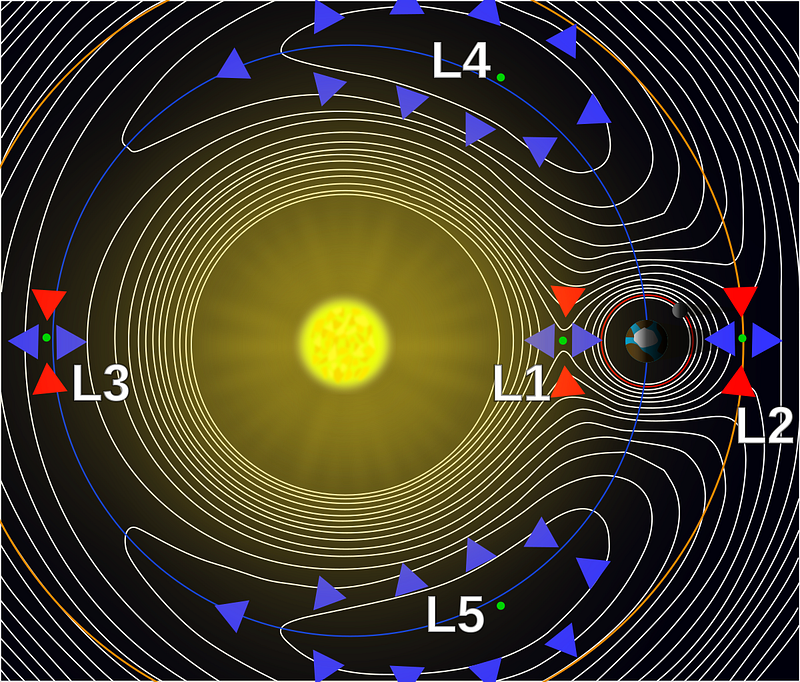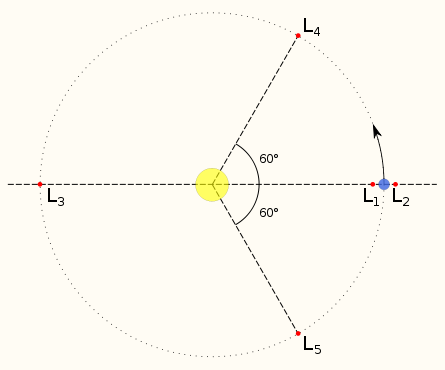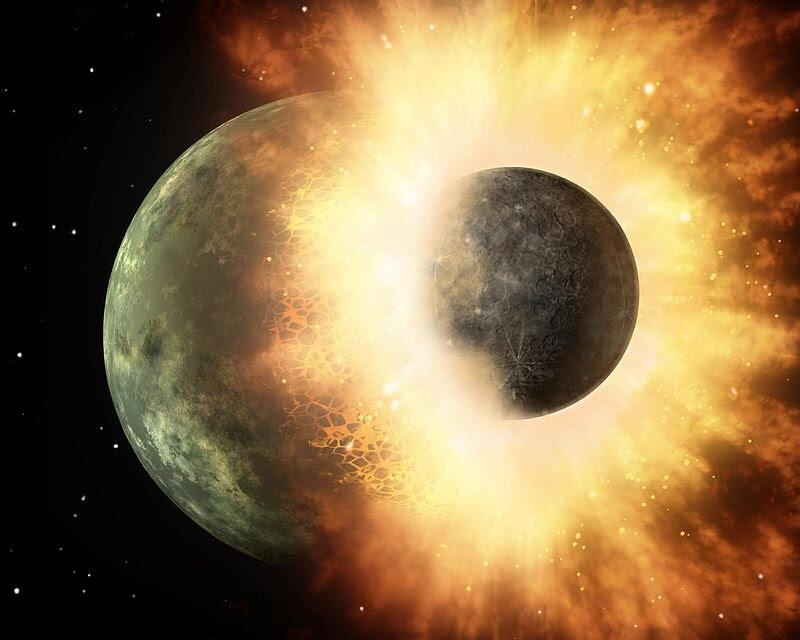Exploring the Fascinating World of Lagrange Points in Space
Written on
Chapter 1: Understanding Lagrange Points
In our Solar System, there are unique locations where the gravitational pull is nearly non-existent, allowing objects to remain in these areas for billions of years. These special spots are known as Lagrange Points. But what makes them so unique, and what is their significance?

What Are Lagrange Points and How Many Exist?
These points were named after the renowned mathematician Joseph-Louis Lagrange, who identified them in 1772. Although gravity is present at these locations, objects can maintain their position due to the balance of gravitational forces exerted by two large celestial bodies. Lagrange Points are frequently referenced in the context of the three-body problem, which involves two massive bodies orbiting a common center of mass while a third, significantly lighter body remains stationary relative to them. There are five such points, all positioned in the orbital plane of the larger bodies.
Lagrange Points are designated with the letter “L.” Points L1, L2, and L3 are collinear, while L4 and L5 are triangular configurations. The positioning of these points is consistent regardless of the types of celestial bodies involved.
Where Are Lagrange Points Located and Their Practical Uses?
The location of Lagrange Points remains constant in relation to the two massive bodies, regardless of their nature. The first Lagrange Point is situated between the two bodies, closer to the less massive one. The second point is located behind the lighter body, while the third is positioned significantly behind the more massive one. These three collinear points can be calculated using specific formulas applicable to any two-body system.

The first Lagrange Point has practical applications, particularly in the Earth-Sun system, where it serves as an ideal location for solar observations. Spacecraft are often stationed here to study solar phenomena. For example, the ISEE-3 probe was launched in 1978 to observe the Sun from this vantage point, and later missions like SOHO, DSCOVR, WIND, and ACE followed suit.
The last two Lagrange Points, L4 and L5, are often referred to as Trojan Points, named after the Trojan asteroids found in Jupiter's orbit. To visualize these points, one can conceptualize two equilateral triangles, with their vertices representing the two massive bodies. The Trojan Lagrange Points are located at the third vertices of these triangles, orbiting 60 degrees ahead of and behind the less massive body.

There is a hypothesis suggesting that one of the Trojan Points in the Sun-Earth system may have been the site of the formation of a planet named Theia. According to lunar formation theories, Theia collided with Earth, leading to the creation of the Moon, with Theia's mass estimated to be similar to that of Mars.
Researchers have identified numerous practical applications for Lagrange Points, as spacecraft positioned there can conduct long-term studies of celestial objects without expending fuel to maintain their orbits.
This video titled "What Makes Lagrange Points Special Locations In Space" delves deeper into the unique characteristics and significance of these points in our Solar System.
In the video "What are the Lagrange points?", you will find an engaging exploration of the concept of Lagrange Points and their role in celestial mechanics.
If you're interested in learning more about space, don't hesitate to follow our channel for updates! Feel free to ask your questions, and I'll address them in future articles. If you enjoy my work and wish to support our efforts, consider becoming a member for just $5 a month, helping us create even better content.